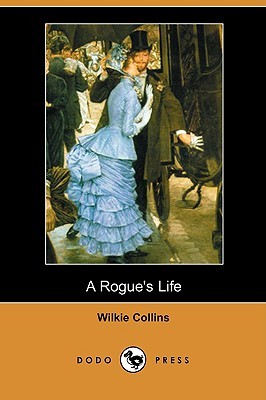Board books, picture books, early readers (fiction, nonfiction):
- This is The Baby. Candace Fleming. Illustrated by Maggie Smith. 2004. FSG. 40 pages. [Source: Book I Own]
- Dig! Andrea Zimmerman and David Clemesha. Illustrated by Marc Rosenthal. 2004. Harcourt. 32 pages. [Source: Book I Own]
- B is for Bulldozer: A Construction ABC. June Sobel. Illustrated by Melissa Iwai. 2003/2013. Houghton Mifflin Harcourt. 32 pages. [Source: Review copy]
- Can You Say It, Too? Woof! Woof! With BIG flaps to Lift! Sebastien Braun. 2014. Candlewick Press. 10 pages. [Source: Review copy]
- Can You Say It, Too? Moo! Moo! With BIG Flaps to Lift! Sebastien Braun. 2014. Candlewick Press. 10 pages. [Source: Review copy]
- A Birthday for Cow. Jan Thomas. 2008/2014. Houghton Mifflin Harcourt. 36 pages. [Source: Review copy]
- Tickle. Leslie Patricelli. 2014. Candlewick Press. 26 pages. [Source: Review copy]
- Toot. Leslie Patricelli. 2014. Candlewick Press. 24 pages. [Source: Review copy]
- The Tree House That Jack Built. Bonnie Verburg. Illustrated by Mark Teague. 2014. Scholastic. 40 pages. [Source: Review copy]
- Hello, Moon! Francesca Simon. Illustrated by Ben Cort. 2014. Scholastic. 32 pages. [Source: Review copy]
- A Pet for Fly Guy. Tedd Arnold. 2014 Scholastic. 32 pages. [Source: Review copy]
- Zoe's Jungle. Bethanie Deeney Murguia. 2014. Scholastic. 40 pages. [Source: Review copy]
- Naughty Kitty! Adam Stower. 2014. Scholastic. 40 pages. [Source: Review copy]
- Animal Colors. Thea Feldman. 2014. Kingfisher. 32 pages. [Source: Review copy]
- Tyrannosaurus. Thea Feldman. 2014. Kingfisher. 32 pages. [Source: Review copy]
- In the Rainforest by Claire Llewellyn. 2014. Kingfisher. 32 pages. [Source: Review copy]
- Firefighters by Chris Oxlade and Thea Feldman. 2014. Kingfisher. 32 pages. [Source: Review copy]
- Scholastic Discover More: Penguins. Penny Arlon. 2012. Scholastic. 80 pages. [Source: Review copy]
- Scholastic Discover More: Penguins Stickerbook. 2014. Scholastic. 16 pages. [Source: Review copy]
- Poem-Mobiles: Crazy Car Poems. J Patrick Lewis and Douglas Florian. 2014. Random House. 40 pages. [Source: Review copy]
- The Boy on the Wooden Box by Leon Leyson. 2013. Simon & Schuster. 240 pages. [Source: Library]
- P.S. Be Eleven. Rita Williams-Garcia. 2013. HarperCollins. 274 pages. [Source: Library
- We Were Liars. E. Lockhart. 2014. Random House. 240 pages. [Source: Review copy]
- The Giver. Lois Lowry. 1993. Houghton Mifflin. 180 pages. [Source: Library]
- Afternoon of the Elves. Janet Taylor Lisle. 1989. Scholastic. 128 pages. [Source: Review copy]
- Fair Weather. Richard Peck. 2001. Penguin. 160 pages. [Source: Library]
- A Long Way From Chicago. Richard Peck. 1998. Penguin. 148 pages. [Source: Library book]
- Independent Study. Joelle Charbonneau. 2014. Houghton Mifflin Harcourt. 320 pages. [Source: Library]
- Fire & Flood. Victoria Scott. 2014. Scholastic. 320 pages. [Source: Review copy]
- Five Children and It. E. Nesbit. 1902/2004. Puffin Classics. 240 pages. [Source: Book I bought]
- Seven Wild Sisters: A Modern Fairy Tale. Charles de Lint. Illustrated by Charles Vess. 2014. Little, Brown. 272 pages. [Source: Library]
- Heartbeat by Elizabeth Scott. 2014. Harlequin. 256 pages. [Source: Library]
- True Colors. Natalie Kinsey-Warnock. 2012. Random House. 256 pages. [Source: Review copy]
- The Testing. Joelle Charbonneau. 2013. Houghton Mifflin Harcourt. 344 pages. [Source: Review Copy]
- Scarlet. A.C. Gaughen. 2012. Walker. 292 pages. [Source: Library]
- Pride and Prejudice. Jane Austen. 1813. 386 pages. [Source: Book I Bought]
- In the Best Families. (Nero Wolfe). Rex Stout. 1950. 272 pages. [Source: Book I Bought]
- A Rogue's Life. Wilkie Collins. 1856. 159 pages. [Source: Book I bought]
- Death Comes to the Village. Catherine Lloyd. 2013. Kensington. 304 pages. [Source: Library]
- Rosie's Riveting Recipes: Cooking and Kitchen Tips from 1940s America. Daniela Turudich. 2003. Streamline Press. 288 pages. [Source: Library]
- William Shakespeare's The Empire Striketh Back. (William Shakespeare's Star Wars #2) Ian Doescher. 2014. 176 pages. [Source: Library]
- The Storytelling God: Seeing the Glory of Jesus in His Parables. Jared C. Wilson. 2014. Crossway. 192 pages.
- A Loving Life. Paul E. Miller. 2014. Crossway. 160 pages. [Source: Review copy]
- The Attributes of God. A.W. Tozer. 1996. Christian Publications. 176 pages. [Book I Bought]
- Strange Fire: The Danger of Offending The Holy Spirit with Counterfeit Worship. John MacArthur. 2013. Thomas Nelson. 333 pages. [Source: Review copy]
- 52 Words Every Christian Should Know. Kendell Easley. 2010. B&H. 124 pages. [Source: Bought]
- The Rhyme Bible Storybook for Toddlers. L.J. Sattgast. Illustrated by Laurence Cleyet-Merle. 2014. Zonderkidz. 40 pages. [Source: Review copy]
- Now That I'm A Christian: What It Means to Follow Jesus. C. Michael Patton. 2014. Crossway. 176 pages. [Source: Review copy]
- The Attributes of God, volume 2: Deeper Into the Father's Heart. A.W. Tozer. 2001/2007. Wingspread. 203 pages. [Source: Bought]
- Discovering the Power of Christ's Prayer Life. Charles Spurgeon. Compiled and Edited by Lance Wubbels. 1995. Emerald Books. 204 pages. [Source: Bought]
- God in the Whirlwind: How the Holy-love of God Reorients Our World. David F. Wells. 2014. Crossway. 272 pages. [Source: Library]
- Taking A Risk On Love. Irene Brand. 2012. Barbour (Heartsong Presents) 184 pages. [Source: Book I Bought]
- Childless (Fatherless #2) James C. Dobson and Kurt Bruner. 2013. FaithWords. 448 pages. [Source: Book I Bought]
- Practical Theology for Women. Wendy Horger Alsup. 2008. Crossway. 154 pages. [Source: Review copy]

